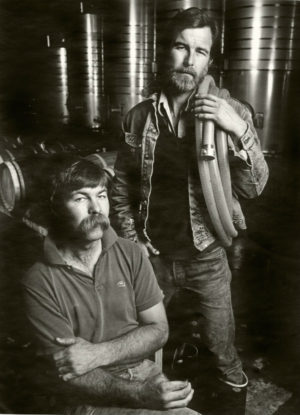By Allison Levine originally posted on January 12th 2018
Fabulous story that highlights the Smith brothers journey into the wine world back in the 70s. We thank Mr. Smith who has championed the rights of farming in the Napa Valley, especially mountain vineyards for the last 47 years! – Mana Wine
Since purchasing his vineyard at the top of Spring Mountain in 1970 and founding Smith-Madrone in 1971, Stuart Smith has become the leading voice of the hillside grower. While Smith believed that the best grapes come from the mountains, a hypothesis had been written that vineyards on hillsides are detrimental to the land. In response, Smith began arguing in favor of hillside vineyards and land-use issues. Being the leading voice was “thrust upon me,” Smith shared. “It was not my intent. When I first got a permit to log the property from Department of Forestry, I was warned that there would be protesters once I brought out a chainsaw.”
Stuart Smith was born and raised in Santa Monica, California and moved to Berkeley in the 1960s for his undergraduate studies. It was at Berkeley that he realized that he liked wine more than beer, atypical for a college student. He became friends with people from the Napa Valley and over several years became enamored with wine and the Napa area. The seeds of his passion had been planted.
Smith pursued his master’s degree at UC Davis and in 1970 purchased 38 acres with his brother. Napa was a small provincial wine-growing town when Stuart Smith first arrived, and he was among the first, along with Mondavi, Freemark Abbey, Chappellet, Spring Mountain Winery, Sterling Vineyards and Chateau Montelena, to plant in Napa. However, Smith selected property that was a forest on the remotest and highest part of Spring Mountain. “I wanted to be in the mountains. I believed then, as I do now, that there are two fundamental foundations to wine. One, you cannot make great wine from anything but great grapes. And, two, all things being equal, the best grapes come from the mountains.”
There had been vineyards on Spring Mountain, yet they had all been abandoned in the 1880s due to phylloxera. The property Smith purchased was a dense forest with good soil and 90-foot Douglas Firs. He got a logging permit in 1971 to reclaim the vineyard and logged one million board feet of timber, sold the logs to a saw mill, picked up rocks and burned slash piles all to re-clear the vineyard.
Read full article here…

